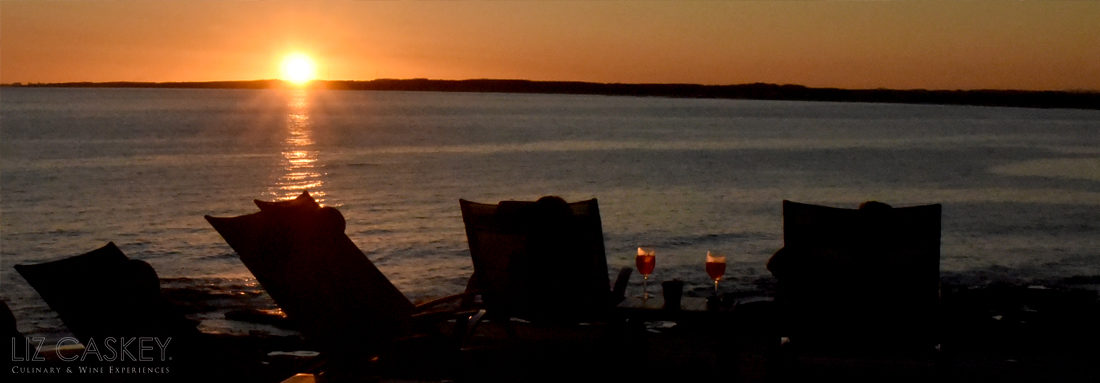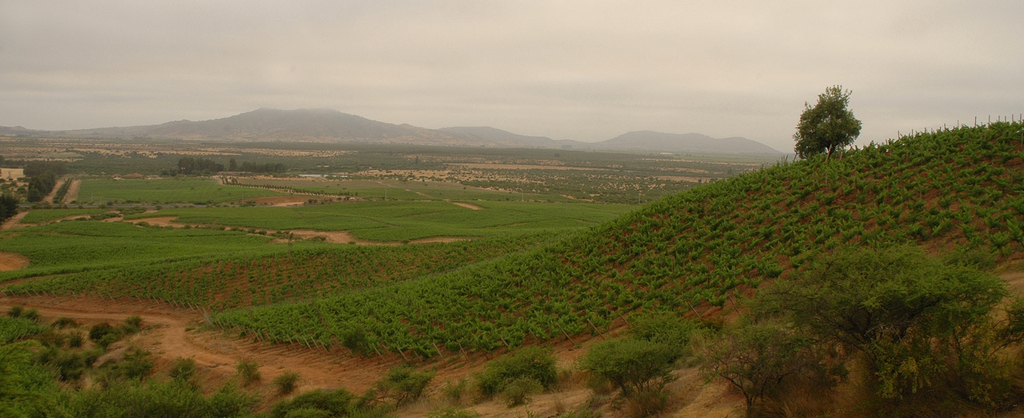There’s no question that Chilean wines are starting to experience a sort of Boom Time in the US market. The price is right, you get a lot of great wine for your buck, and there is t-o-n-s of variety and depth. But with all this recent growth, is Chile really just setting itself up as the next Australia or it is here (I mean there) to stay?
I caught up with a wine industry colleague who is very well versed and up-to-date on this exact topic to get her impressions on this trend. Meet Marie Chaisson, Sales and Marketing Director the Americas and Japan for Estampa Winery located in the Colchagua Valley. Marie is energetic, super savvy and is going to give us her personal take on what is driving Chilean Wine in the US market and some of her personal experience in it. She just sealed a major importer deal for Estampa that not only was a landmark for the winery, it signaled the overall seriousness of Chilean wines in the US market–and why they are there to stay and grow.
1. Despite the recession in the US, Chilean wine exports to the US market are growing like never before. What do you attribute to the success from a commercial and consumer standpoint?
Chile has a long-standing reputation for offering the best value for the price. Since Americans were carefully guarding their pocketbooks in 2009, they gravitated towards lower price points, specifically around the $10 mark, and Chile is thought of for producing the best quality at this price. From the consumer perspective, this means that the overall volume increased (8.3% in 2009 over 2008 in the US) but the average case price sold in the US went down. From the commercial perspective, Chile has worked hard over the years to establish itself as a reliable supplier and I see some US importers and distributors naturally favoring Chile because Chilean companies are easier to do business with. This in turn helps to maintain long-term sales growth.
2. Where are you seeing people consume Chilean wines now? In restaurants, wine shops, etc.? What kind of varietals are most popular?
If you look at the numbers, no other country is more concentrated in the US retail sector than Chile. This means we have a lower presence in restaurants, which makes sense because Chile does not YET evoke a clear culinary concept that makes it a natural pairing for restaurants (i.e. Italian wines at Italian restaurants, California wines at Americana-focused restaurants).
During 2009, I was excited to see Chile popping up considerably more on restaurant lists, especially by the glass. The benefit of the recession is that because of consumer price pressures, Chile was given an opportunity to perform on restaurant wine lists, where we may not have been considered before. I just hope that we have been making a positive impression and we keep our place on wine lists! Carmenere is definitely becoming more widely known amongst the consumer base, although the wine industry has been savvy to Carmenere for a few years now. Cabernet Sauvignon still reigns king, though. Interestingly, I hear a lot of people confuse Chile and Argentina and “oh yeah, you guys have Malbec, right?” And the answer is YES! We do have Malbec too!
3. Can you profile the average consumer of Estampa wines? Where does Estampa fit into the overall Chilean Wine Universe?
Estampa is a family-owned, estate property from the Colchagua Valley and we are in between what is considered “boutique” and mid-sized. So in terms of the Chilean Wine Universe we are still a pretty small winery. Our philosophy is to make only Assemblage wines, or wines that are blended with two or more grape varieties. While Chilean red blends are a FAST growing category, we still are catering to a slightly more sophisticated wine consumer. Someone who is not afraid to pick up wine from Chile that is a blend of Malbec-Petite Syrah, or a modern-twist on the Bordeaux blend: Carmenere, Cabernet Sauvignon, Cabernert Franc and Petit Verdot (both of these blends are found in Estampa’s line-up). These types of wine may not appeal to the general consumer base, but Estampa’s goal is not to be like everyone else. We want wines that are unique in addition to showing a sense of place.
4. The Wine Advocate touts the importer, American Estates Wines, as one of the best in the US. Tell us why, in your own words, why Estampa’s recent signing with them was a landmark deal for you–not only for Estampa but for the Chilean wine industry. What does this signal about the growth of the industry and positioning in the US market?
American Estates is considered by The Wine Advocate as one of the top specialty importers to the US. Estampa’s wines are the least expensive wines in their entire portfolio as they have specialized in regional, ultra-premium wines from New Zealand and Australia. For example, American Estates has built its reputation over 20+ years with brands like Selaks from Marlborough and Mt. Difficulty from Central Otago in New Zealand, and Turkey Flat from the Barossa Valley in Australia. These are wines that consistently rate 90 points or higher in the major US wine publications. Being the newest addition the American Estates portfolio is a major turning point for Estampa for a number of reasons.
a. A weakness of many Chilean wineries is to underestimate the power their importer and distribution channel have in defining your brand image. You can make the best wine in the world, but if your importer is known for selling cheap plunk and cannot get you into the best channels, then your credibility as a quality producer will fail. A good, reputable importer like American Estates can add a lot of influence to your brand, in addition to boosting your sales. The flip side is that the best importers don’t take chances on unknown brands. They want wines that have been market-tested.
b. My goal in the US was to grow the Estampa brand slowly, by managing our own import system to the US, and hand selecting distributors who were passionate about wine. Once Estampa’s wines had a small but loyal following in the US with good ratings, it was necessary to look for a national importer to take over from our self-importation system. Working with American Estates is very exciting because they are a great team of professionals who all REALLY know wine.
The deal is significant for the whole Chilean industry in that reputable members of the trade are looking to Chile as a region of expansion, where they may not have done so in the past. The interesting part of Estampa’s relationship with American Estates, is that they methodically chose CHILE as their region of expansion. Because hardly any of their wines had a retail price of less than $20 a bottle and the unfortunate image that Australia gained from the critter-wine trend, American Estates decided to diversify their portfolio in a new category that fit a missing price-point. Here you have one of the top specialty importers to the US, and above Old World wines, or South Africa, or Argentina, or even California, they saw Chile as the go-to region for future growth… and not just in the short term! Plus, the fact that Chile has a reputation for being easy to work with, on a commercial level, just sealed the deal.
I think this indicates a major shift in the perception of Chile. Australia was very hot a few years ago and the category is taking a hit in the US. There are always country trends in the US. I see that Chile is on the upswing and being propelled, possibly against its will, by the demand for inexpensive wines. Now the key for Chile is to retain the slots that we have acquired on wine lists and shop floors due to the recession, and start replacing the lower-priced wines with some of the amazing, regional-focused product that we are being recognized for.
5. In the past, a lot of Chilean wineries fought among themselves for precious shelf space. Do you still think that’s the case or with increased awareness of the wines at a widespread level are you seeing that there are more (new) and (educated) consumers trying more brands?
While Chile’s shelf space is growing slowly, there is still no widespread awareness on the consumer level of the diversity of Chile’s wine regions, and therefore wine shops cannot justify bringing in more brands. Several years ago wine shops had just “South America” sections. It is a major coup that Chile can now stand on its own as a category at a wine store. Six years ago, Wines of Chile launched its plan to promote the diversity of Chile’s regions. While I see that the wine press has totally supported this, it hasn’t completely trickled down to the wine buyers and consumers. I do meet educated consumers that have heard of Casablanca and Colchagua, but I don’t think they can make the connection between how the two valleys are different. Consumer awareness will come around. We as wineries have to keep conveying the same message.
6. So do you think Chile is going to be the next Australia? What would Chile have to do to not shoot itself in the foot like Oz did?
Chile is primed for major growth in export markets, but not in the same way that Australia had its boom. Australia’s major follies were over planting, industry focus to the large, mass-market producers and hanging its hat on one variety, Shiraz. Chile has been criticized lately for excessive planting, but the industry has been careful to promote our Carmenere wines while not depending on the variety (Carmenere comprises only 7% of red grape plantings, according to a 2009 count by the Chilean Agriculture Service). What you will see from Chile is a lot more interesting small, to mid-sized producers, who are getting attention, as opposed to the mega-brands like Yellow Tail, Hardy’s and Rosemont from Australia who were getting all the play 2-3 years ago.
7. What Chilean wines get you super jazzed right now (and they don’t have to be Estampa)? What wine did you drink with dinner last night?
Last night we popped a bottle of Chateau Pey La Tour, an inexpensive yet tasty Bordeaux that Mundo del Vino, in Santiago, brings in. Honestly, I drink so many Chilean wines that I am really into expanding my palate with old world wines right now. From Chile, I am excited about interesting whites. Even though we are on the verge of winter, I love the food-friendliness of Chilean whites, like Emiliana’s Novas Chardonnay-Viognier-Marsanne, Loma Larga’s whites and Estampa’s Estate Viognier-Chardonnay.
8. As an industry insider, share with Eat Wine readers some tips to navigate the sea of options when choosing a Chilean wine blindly. Any thoughts on to how to sniff out winners?
The best way to pick up a good bottle of Chilean wine is to find a local wine shop, hopefully independently owned, that has a good reputation and tastes everything that is brought into the store. Not only will you be assured that every bottle in the store is a good buy for the price, but the staff can talk to you about the wines so you have an interesting story to bring home, along with the bottle. My biggest misconception about wine, before going to work in the industry, was that quality wine shops only sold expensive wines. Wrong! Don’t be intimidated. You will be happy you did it.
Thanks again to Marie for this amazing perspective and interview. Also thanks to her husband, the talented photographer Marco Lillo, for capturing these photos of Estampa’s Marchigue estate in the Colchagua Valley. Be sure to check out their lush blends. I LOVED both Gold assemblages.














